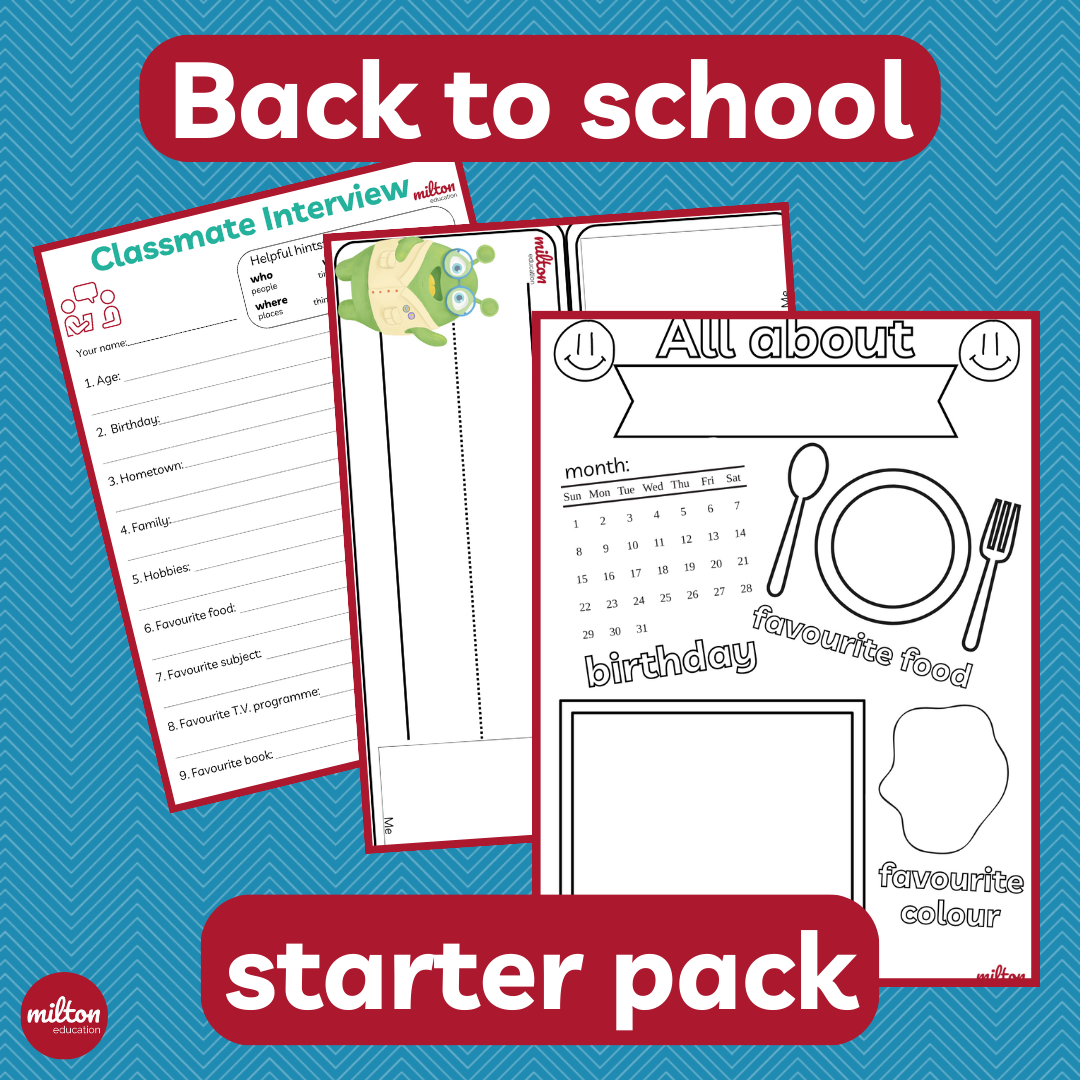
The start of a new school year can be both exciting and daunting for students – and teachers! As educators, it is essential to set the right tone and establish a positive learning environment from the very beginning. By following these four tips, you won’t only set yourself up for a smooth transition into the school year, but you’ll also foster confidence in your students and provide them with a structure to help them access learning.
Do you have a back-to-school trick that has worked for you? Don’t be shy! Share it with other Milton English teachers in the comments below!

Tip One: Set up Classroom Routines
Routines play a crucial role in fostering a productive learning environment. They provide structure and consistency for students, making it easier for them to navigate through daily tasks and transitions. This consistency can help create a sense of ease in your English classroom, especially for students who may have a more difficult time with language acquisition. Think about creating a clear routine that students can count on each morning as a language “warm up.” You could start with an English song, questions about the weather or asking students how they are feeling. Additionally, you can set routines for independent work, partner work, tidying up and finishing the lesson.
Clearly communicate routines to students and allow time for them to understand them during the first week. As routines become ingrained, students will feel more comfortable and instructional time will be maximised. Routines particularly support any struggling students who will gain confidence as they prove to themselves that they have a clear understanding of what is being asked of them, overall easing their language anxiety. This is true for teachers too! Securely established routines can help ease your workload as you won’t have to worry about how to start or move the lesson on, and student behavior will be more manageable.
Watch this video from the free version of our Masters in Innovative Language teaching for 7 examples of successful classroom routines.
Tip Two: Set Rules with Students
Instead of dictating rules to students, involve them in the process of establishing classroom expectations. During the initial days of school, facilitate discussions with students about the kind of learning environment they desire. Encourage them to think about the rules and behaviours necessary to create that ideal environment. These rules can also include expectations around language. Having the students create rules around language use can help them feel more motivated to frequently use English. By including students in rule-setting, they develop a sense of ownership and responsibility for maintaining a positive atmosphere and knowing when it’s appropriate to use English or their native language, promoting student engagement and fostering a sense of community within the classroom. Later on, when the time comes to address student behaviour, you’ll be prepared and able to point to something concrete that the student has already taken the time to understand. Time and effort spent trying to correct behaviour will decrease when students and teachers are on the same page!

Tip Three: Leave Space for Student Decoration
Creating a visually appealing and personalised classroom environment is essential for student engagement and motivation. However, rather than feeling pressured to decorate every inch of the classroom before the school year starts, consider leaving some areas blank for student decoration and to showcase student work. Students can find creative ways to exhibit their new language skills. Not only does it take some of the work off your hands, it gives students a chance to demonstrate their knowledge and understanding in creative ways! Providing students with the opportunity to contribute to the classroom decor not only encourages creativity but also instills a sense of pride and responsibility in their learning space. As the year progresses, the classroom will transform into a collaborative and vibrant space that showcases student work and achievements.
Tip Four: Keep Things Simple
The first week of school is a crucial time for students to adjust to new routines and teachers, just as it is a crucial time for teachers to get to know their students and their learning styles. In the case of language learning, it can also be a time for students to adjust to using English which they may have not used since the previous school year. To make the new year transition as smooth as possible for both you and your students, keep activities simple and enjoyable during this initial period. Focus on icebreaker activities, team-building exercises and fun educational games. This approach helps students feel more comfortable and confident, reducing any language anxieties they may have and they’re a great way for you to learn about your students and their personalities!

As English teachers, it’s essential to lay a solid foundation for the school year to ensure a successful and enjoyable learning experience – and teaching experience! By setting up effective classroom routines, involving students in rule-setting, establishing student ownership of the classroom environment and keeping initial activities simple, teachers can create a positive, engaging and supportive learning environment where students actively seek out opportunities to use their English skills. These four ideas will foster a sense of belonging, encourage student participation and set the stage for a productive and rewarding school year. Remember, the key is to be patient and flexible as you adapt these strategies to suit the unique needs and dynamics of your classroom. Here’s to a fantastic and successful school year ahead!








Leave A Comment
You must be logged in to post a comment.